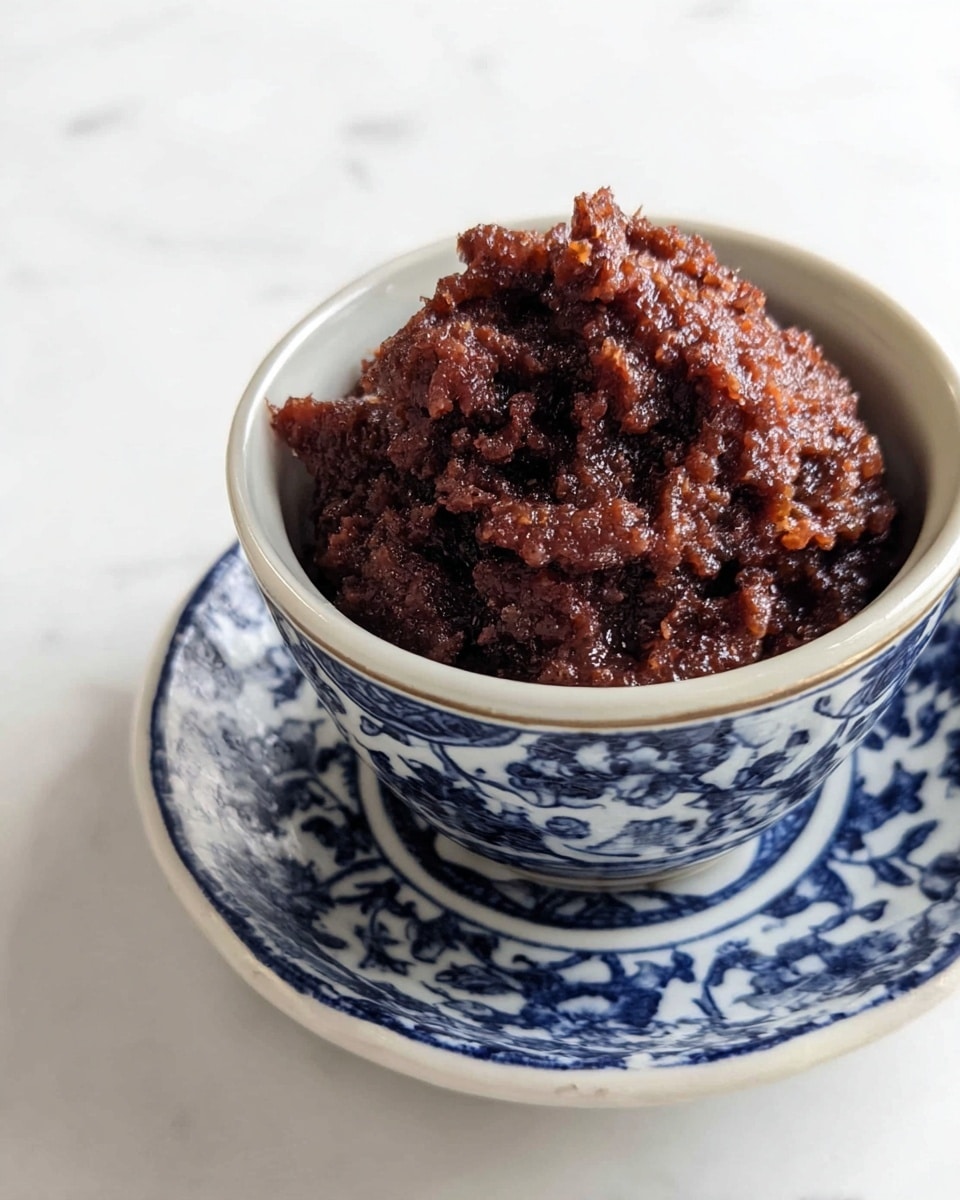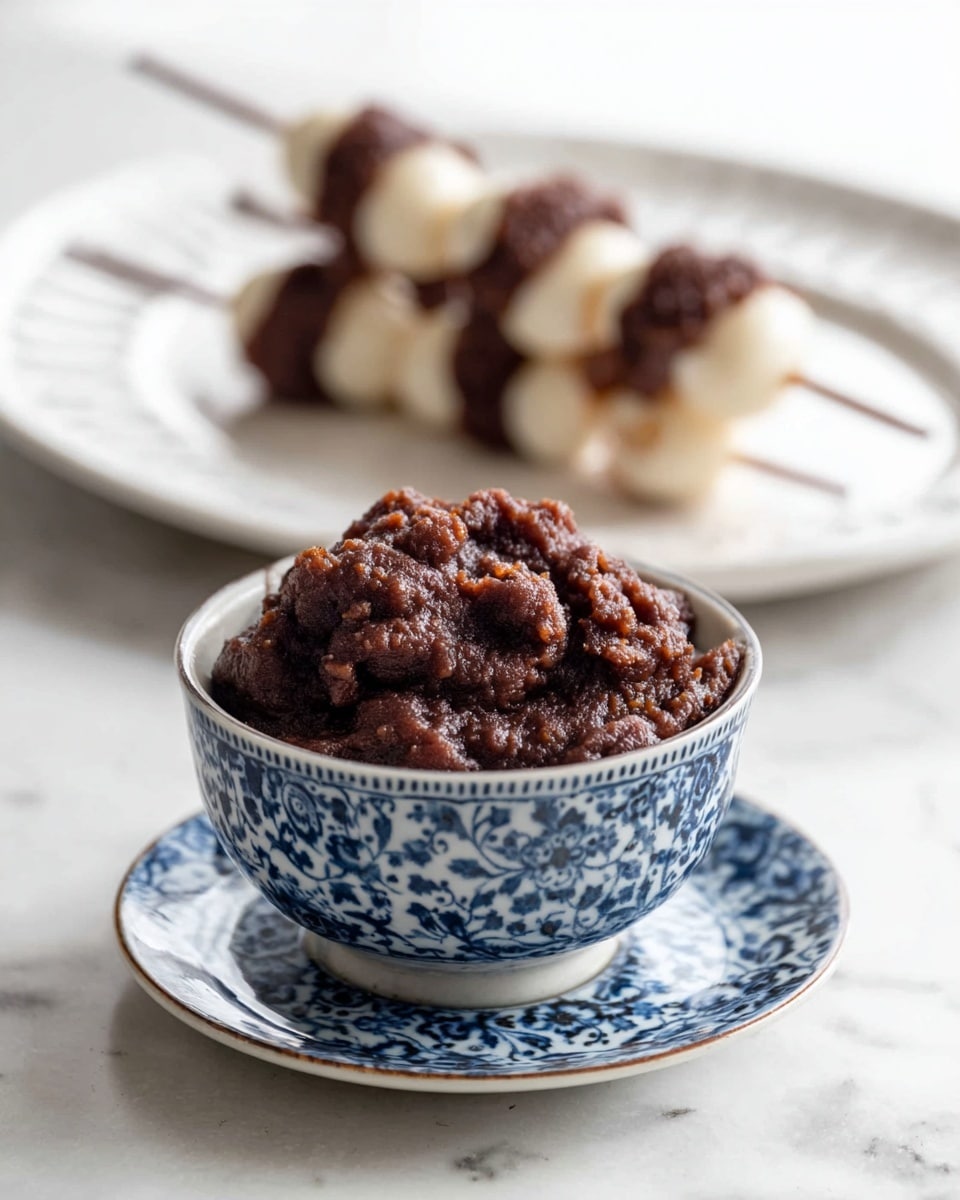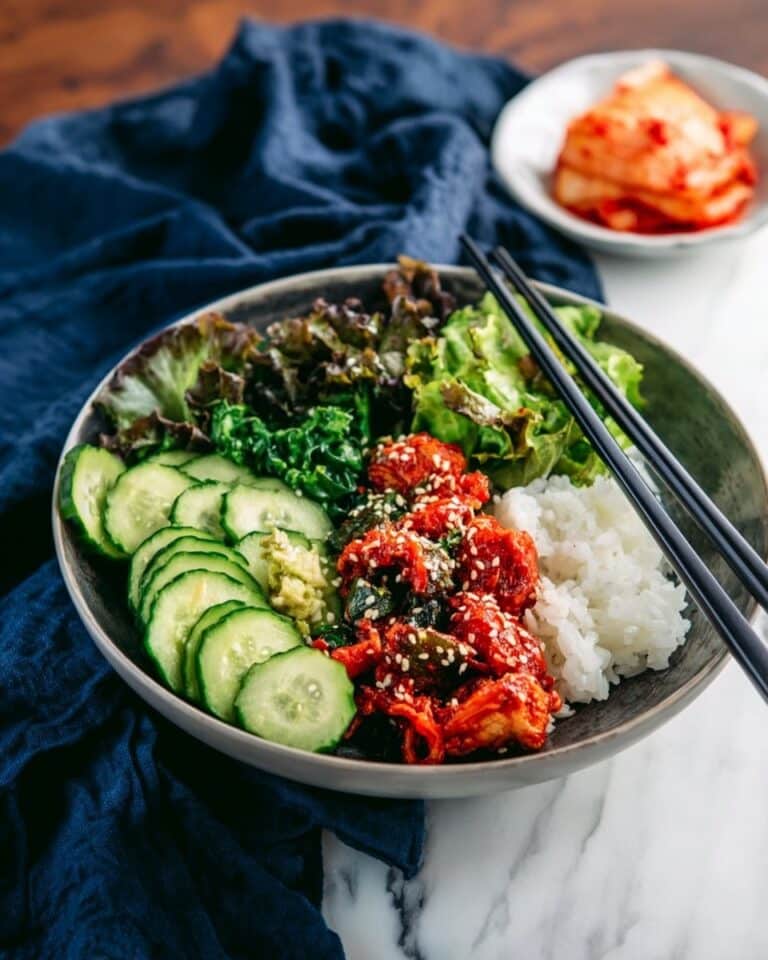How to Make Classic Japanese Sweet Red Bean Paste (Anko) Recipe
If you’ve ever tried Japanese sweets, you’ve probably encountered that smooth, sweet, and slightly earthy delight known as anko or sweet red bean paste. It’s the heart and soul of many traditional treats like mochi, dorayaki, and taiyaki, and knowing how to make classic Japanese sweet red bean paste (Anko) recipe at home gives you the magic key to whipping up authentic desserts anytime. I love that it’s not just a simple sweet spread — it’s got a rich, comforting flavor that really brings that unique Japanese sweetness to life, without being overly sugary.
One of the best parts about making how to make classic Japanese sweet red bean paste (Anko) recipe yourself is how customizable it is to your taste—plus, it connects you with an age-old tradition right in your own kitchen. Whether you’re a red bean paste newbie or want to dive deeper into Japanese cooking, this recipe will walk you through making perfect anko, with my personal tips to avoid those common pitfalls. Trust me, once you get this right, you’ll want to find every excuse to enjoy it!
Ingredients You’ll Need
The magic of this classic anko comes down to a few simple ingredients that work perfectly together. Don’t worry about fancy additions here—the key is quality azuki beans and balancing sweetness just right with sugar and a pinch of salt to lift the flavors.
- Azuki Beans: These little red beans are the soul of anko. Look for small, fresh ones for a smooth paste.
- Sugar: I prefer using regular granulated sugar, but you can experiment with brown sugar for a deeper flavor.
- Salt: Just a pinch enhances the natural sweetness and brings balance.
- Water: You’ll need enough to soak and cook the beans until they’re tender and ready to mash.

Variations
I love playing around with my anko depending on what I’m making or my mood. Some days I prefer a chunky texture, while others call for a smooth, silky paste. Don’t be shy—make this recipe your own!
- Chunky Anko: After cooking the beans, mash them lightly instead of pureeing, keeping some bean pieces for texture. I find this works great in dorayaki.
- Smooth Anko: Use a fine sieve or blender to create a silky paste—you’ll impress friends when you bring this to tea time.
- Less Sweet Version: Reduce sugar by half if you want a more subtle sweetness. Perfect if you’re pairing with very sweet mochi.
- Brown Sugar Twist: Swap white sugar with brown sugar to add a caramel-like depth. I tried this once, and it added a nice rustic vibe.
How to Make How to Make Classic Japanese Sweet Red Bean Paste (Anko) Recipe
Step 1: Prep and Soak Your Azuki Beans
Start by rinsing one cup of dried azuki beans thoroughly under cold water. Place the beans in a bowl and cover them with warm water, letting them soak for at least 3 hours or overnight if time allows. I’ve found that soaking not only cuts down the cooking time but also helps the beans cook evenly, resulting in that beautiful tender texture we want in anko.
Step 2: Boil and Cook the Beans Gently
Drain the soaking water and transfer the beans to a pot. Cover them with fresh water about 1cm above the beans. Bring to a boil, then drain the water—this quick first boil helps remove some of the bean’s bitterness. Next, add 5 cups of fresh water, bring to a gentle simmer, and cook the beans uncovered for 60-90 minutes. Check occasionally, and add more water if necessary to keep the beans covered. You’ll know they’re done when the beans are super soft and easily smashed between your fingers.
Step 3: Sweeten Your Cooked Beans
Once your beans are tender, drain any excess water, then return the beans to the pot on low heat. Add one cup of sugar and just a pinch of salt. Stir gently but continuously, breaking the beans down with a spoon or spatula as the mixture thickens, about 10-15 minutes. Be patient here—I promise the end result is worth the slight arm workout! Taste and adjust sugar if you like it sweeter, but remember, anko should balance sweetness with the bean’s natural earthiness.
Step 4: Mash or Puree to Your Favorite Texture
Now, here’s where you decide your anko’s personality. For chunky paste, give a couple of gentle mashes with a potato masher, leaving bits of beans intact. For smooth anko, run the cooked beans through a food mill or blender until silky. I usually make smooth anko for sweets like daifuku, but chunky anko has fantastic texture in pancakes!
Step 5: Cool and Store Your Anko
Transfer your sweet red bean paste into a clean container and let it cool completely before sealing the lid. This step helps the flavors meld and prevents condensation. Once cooled, you can store it in the fridge for up to a week. I keep a jar handy because it adds instant magic to any Japanese-inspired treat.
How to Serve How to Make Classic Japanese Sweet Red Bean Paste (Anko) Recipe

Garnishes
I like sprinkling a little toasted sesame seeds or a pinch of matcha powder on top—these add a subtle crunch and color contrast that elevate the humble anko. Sometimes, just a fresh mint leaf on the side gives a nice herbaceous note that pairs surprisingly well.
Side Dishes
Anko is classically served alongside mochi, but I often use it as a filling for steamed buns or spread on buttered toast for a quick sweet snack. It pairs beautifully with green tea or hojicha, making it a perfect companion for a calm afternoon break.
Creative Ways to Present
For special occasions, I’ve crafted little anko parfaits layered with whipped cream and fresh fruit—such a fun twist that surprises guests! Also, rolling it into ice cream balls or swirling into yogurt gives you a modern dessert with traditional flavor—you’ll impress everyone at your next dinner party.
Make Ahead and Storage
Storing Leftovers
I store leftover anko in a sealed glass jar in the fridge, where it keeps beautifully for about 5 to 7 days. Just make sure it’s completely cooled before putting it in the fridge to avoid any moisture buildup. I find this keeps the flavor fresh and the texture just right.
Freezing
Freezing anko works great if you want to keep it for longer—just spoon it into an airtight container or freezer bag. When I freeze my anko, I portion it into small servings so I can thaw only what I need, which keeps waste down.
Reheating
When reheating frozen or refrigerated anko, I prefer warming it gently in a saucepan over low heat. Stir often to prevent sticking and add a splash of water if it feels too thick. This method brings back its lovely soft texture without drying it out.
FAQs
-
Can I use canned red beans to make anko?
While you can technically use canned red beans, they often contain added salt or preservatives that can affect taste and texture. Plus, soaked and cooked azuki beans give you more control over the sweetness and consistency. If you’re short on time, canned beans are okay in a pinch, but fresh-cooked is best for authentic anko flavor.
-
What’s the difference between smooth and chunky anko?
Smooth anko (koshian) is pureed and sieved to be silky and free of bean skins. Chunky anko (tsubuan) keeps some of the bean skins and has a coarser texture. Each brings a different mouthfeel; smooth anko suits delicate pastries, while chunky anko adds rustic charm to pancakes and buns.
-
How long can I store homemade anko?
When stored in an airtight container in the refrigerator, homemade anko lasts about 5 to 7 days. For longer storage, freezing is a great option and can keep it for up to 3 months.
-
Can I adjust the sweetness?
Absolutely! The sugar amount can be increased or decreased to suit your preference. I typically start with one cup but taste as you go, especially if pairing with other sweet desserts.
-
Is anko gluten-free?
Yes! Anko made with just azuki beans, sugar, salt, and water is naturally gluten-free, making it a great option for gluten-sensitive folks who want a taste of Japanese sweets.
Final Thoughts
Making how to make classic Japanese sweet red bean paste (Anko) recipe has honestly been a joy and a gentle challenge in my kitchen. It feels like a little daily ceremony to turn simple beans into something so magic and sweet. I hope you’ll give this recipe a try, whether you’re aiming to impress guests with homemade wagashi or just want a delicious spread for toast. It’s a warm, comforting tradition you can share anytime, and once you start making your own anko, you’ll wonder how you ever enjoyed those sweet moments without it!
Print
How to Make Classic Japanese Sweet Red Bean Paste (Anko) Recipe
- Prep Time: 1 hour 10 minutes
- Cook Time: 1 hour 20 minutes
- Total Time: 2 hours 30 minutes
- Yield: About 2 cups of anko paste 1x
- Category: Dessert
- Method: Stovetop
- Cuisine: Japanese
- Diet: Vegetarian
Description
Anko is a traditional Japanese sweet red bean paste made from azuki beans and sugar. It is commonly used as a filling in various Japanese sweets like mochi, dorayaki, and taiyaki. This recipe guides you through cooking and sweetening azuki beans to create a smooth, sweet paste with a rich flavor and subtle texture.
Ingredients
Ingredients
- 1 cup azuki beans (200g / 7oz)
- 5 cups water
- 1 cup sugar (200g / 7oz)
- 1 pinch salt
- Boiling water, enough to cover the beans 1 cm / 1/2 inch above the top
Instructions
- Prepare and Soak Beans: Rinse the azuki beans under cold water to clean them. Then place the beans in a pot and cover them with boiling water about 1 cm (1/2 inch) above the beans. Let them soak for about an hour to soften slightly and reduce cooking time.
- Initial Boil and Drain: Bring the pot of beans and soaking water to a boil over medium-high heat. Once boiling, let them cook for about 5 minutes, then drain off the water. This step helps remove bitterness from the beans.
- Cook Beans: Return the drained beans to the pot and add 5 cups of fresh water. Bring to a boil, then reduce heat to low and simmer gently with a lid partially on for about an hour, or until the beans are soft and can be mashed easily. Stir occasionally and add more water if needed to keep beans submerged.
- Add Sugar and Salt: Once the beans are cooked and soft, add the sugar and a pinch of salt to the pot. Cook over low heat, stirring frequently until the sugar dissolves completely and the mixture thickens to a paste-like consistency, about 10-15 minutes.
- Finish the Anko: If you prefer a smoother paste, lightly mash the beans with the back of a spoon or a potato masher as you cook. Remove from heat once the desired consistency is achieved. Let the anko cool completely before using or storing.
Notes
- For a smoother anko (koshi-an), strain the cooked beans through a sieve to remove skins after cooking and before adding sugar.
- Store anko in an airtight container in the refrigerator for up to 1 week or freeze for longer storage.
- You can adjust the sugar amount according to your preferred sweetness level.
- Cooking times may vary depending on the azuki bean variety and freshness.
Keywords: Anko, Japanese sweet red bean paste, azuki beans, dessert filling, traditional Japanese sweets, red bean paste recipe







